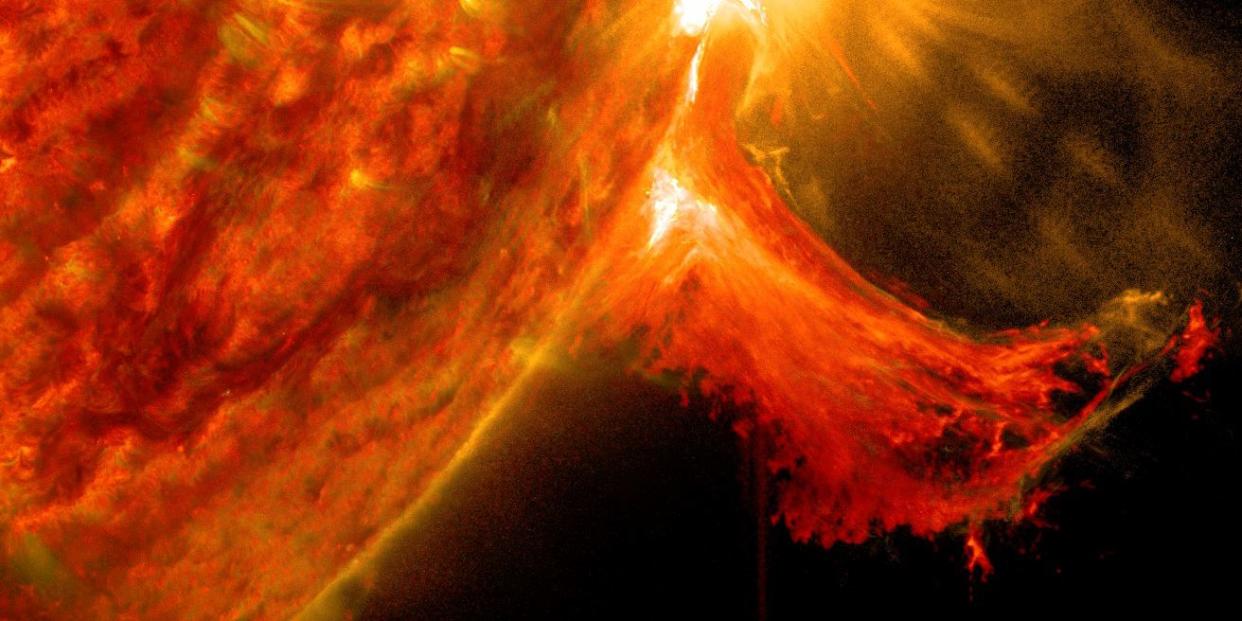NASA Will Kindly Give Us a 30-Minute Warning Before Devastating Solar Storms Arrive

A new AI-powered model could predict solar flares 30 minutes before they hit Earth.
The program, called DAGGER, uses a method of AI called “deep learning” to keep an eye on the Sun’s activity and warn us about any incoming storms.
A 30 minute warning could give those running systems vulnerable to solar flares—like power grids and communications networks—time to protect their systems and prevent damage.
Every 11 years, the Sun completes one cycle of activity levels. It some stages, it’s pretty calm, and doesn’t warrant much worry. In others, though, it’s a lot more active, and we have a bit more cause for concern.
The most active phase of the Sun’s cycle is called the solar maximum. During this time, our star sends out solar flares at its most frequent rate, and solar flares can cause trouble. Not end-of-life-on-Earth kind of trouble, but definitely huge-disruption-of-infrastructure kind of trouble. So, considering the next solar maximum is scheduled to arrive in 2025, any kind of warning system we can put in place is imperative.
Enter DAGGER. The DAGGER model (more formally known as Deep Learning Geomagnetic Perturbation) is an AI computer model developed to track and predict the activity of the Sun, and let us know when a solar flare is coming our way. In a recent paper, the team developing the tech announced that the program could predict the arrival of a solar flare in under a second, and 30 minutes before it hit our planet.
If a solar flare hits us head-on, it could seriously mess up a lot of our electronic and communications systems. When particles from the sun enter a region around Earth called the magnetosphere, they can cause what are known as geomagnetic storms. When these excitations are small, we get natural wonders like the Northern Lights. But when they’re as strong as they could get from a direct solar flare hit, they have the potential to knock out power grids, damage satellites, take down communication and navigation systems, and cause a host of other problems with everyday electronics.
And there’s nothing we can do to shield ourselves from that kind of stellar expulsion. But with enough warning time, we can protect ourselves and our tech from the worst of the damage in other ways. Thirty minutes may not seem like much, but getting the kind of heads up that DAGGER would give could allow for protective actions like shutting down systems and moving satellites to be taken before the solar flare got the chance to short out everything in its path.
Beyond being a potentially tech-saving warning system, DAGGER’s code is completely open source. This means that anyone who may need the warning can go in, grab the core programming instructions, and modify them to suit their own needs.
“With this AI, it is now possible to make rapid and accurate global predictions and inform decisions in the event of a solar storm, thereby minimizing—or even preventing—devastation to modern society,” Vishal Upendran, lead author on the DAGGER paper, said in a NASA article.
Considering how much of a looming threat solar flares can be, the prospect of a solid warning system is certainly a relieving thought.
You Might Also Like

